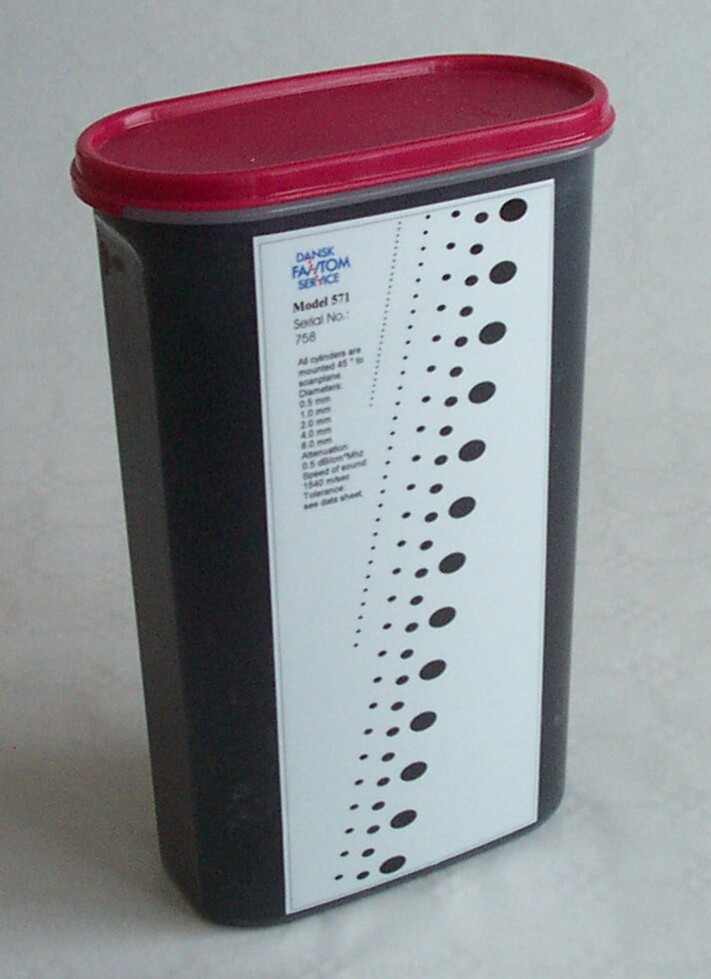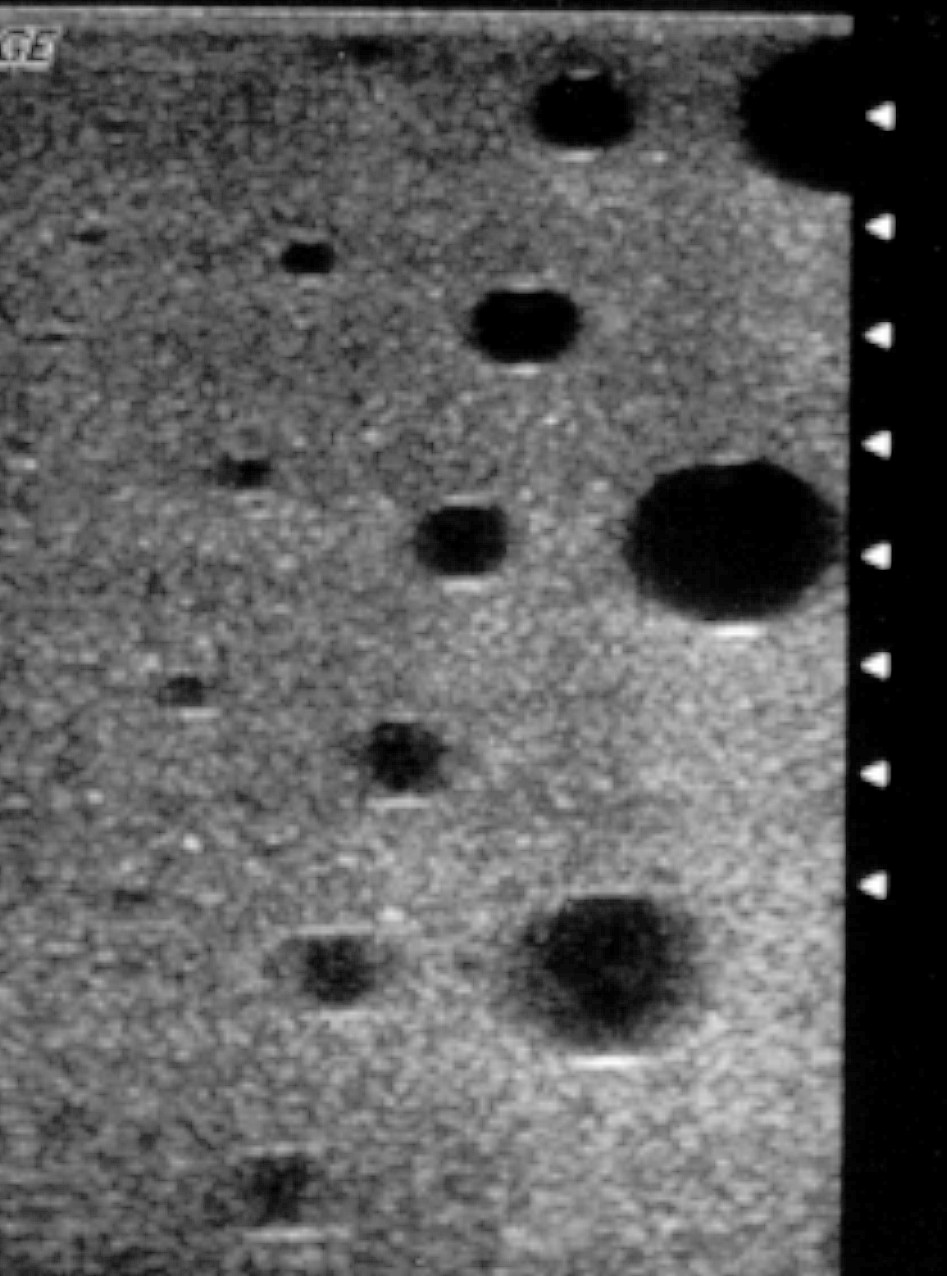
Model 571, penetration phantom


|
|
|
Model 571, penetration phantom
|
|
|
||
|
|
||
|
|
||
|
|
||
|
|
||
|
|
||
|
|
||
|
|
||
|
|
||
|
|
||
|
|
||
|
|
||
|
|
||
|
|
||
|
|
||
|
|
||
|
|
||
|
|
||
|
|
||
|
|
||
|
|
||
|
|
||
|
|
||
|
|
||
|
|
||
|
|
||
|
|
||
|
|
Model 571 Extra large scan- and elevation-plane cyst phantom for transducers with high penetration.
The phantom mass is 15 cm wide, 25 cm high and 4 cm deep. At the scanning surface the inside of the box is 17 cm wide and allows testing of wide transducers.
The surface is covered with a protective plate of 0,5 mm PE, which allows transmission of Ultrasound.
30 cylinders of 0,5 mmØ covering distances of 1 mm – 60 mm from the surface,
30 cylinders of 1 mmØ covering distances of 2 mm – 145 mm from the surface,
25 cylinders of 2 mmØ covering distances of 2 mm – 242 mm from the surface,
25 cylinders of 4 mmØ covering distances of 5 mm – 245 mm from the surface,
13 cylinders of 8 mmØ covering distances of 5 mm – 245 mm from the surface.
All the cylinders are mounted at 45 ° to the scan plane, showing the combined effect of the scan plane and the elevation plane focusing. The cylinders are mounted 80 ° to the scan-axis reducing the reflections from the interfaces.
Attenuation of background material: 0,5 dB * cm * MHz. Tolerance see data sheet.
Sound speed of background material 1540 m/sec. Tolerance see data sheet.
Outer dimensions: 18 cm * 9 cm * 28 cm
Weight:~ 3 kg
Use large amount of scanning jelly or if the transducer can tolerate it, just water, or the preservative fluid. Avoid pressing the transducer into the phantom. The lifetime is dependent on the mechanical load.
Tilt the transducer a little to avoid reflections from the interfaces between the cysts (cylinders) and the background.
Optimize the focus in the near field.
Notice the distance to the closest cylinder that can be distinguished for all the 5 different sizes.
Optimize the focus to the fare field.
Notice the distance to the most distant cylinder that can be distinguished for all the 5 different sizes.
May be the smallest cylinders can’t be seen, or only seen in a small part of the image. In that case optimize the focus to that distance and find the two limits.